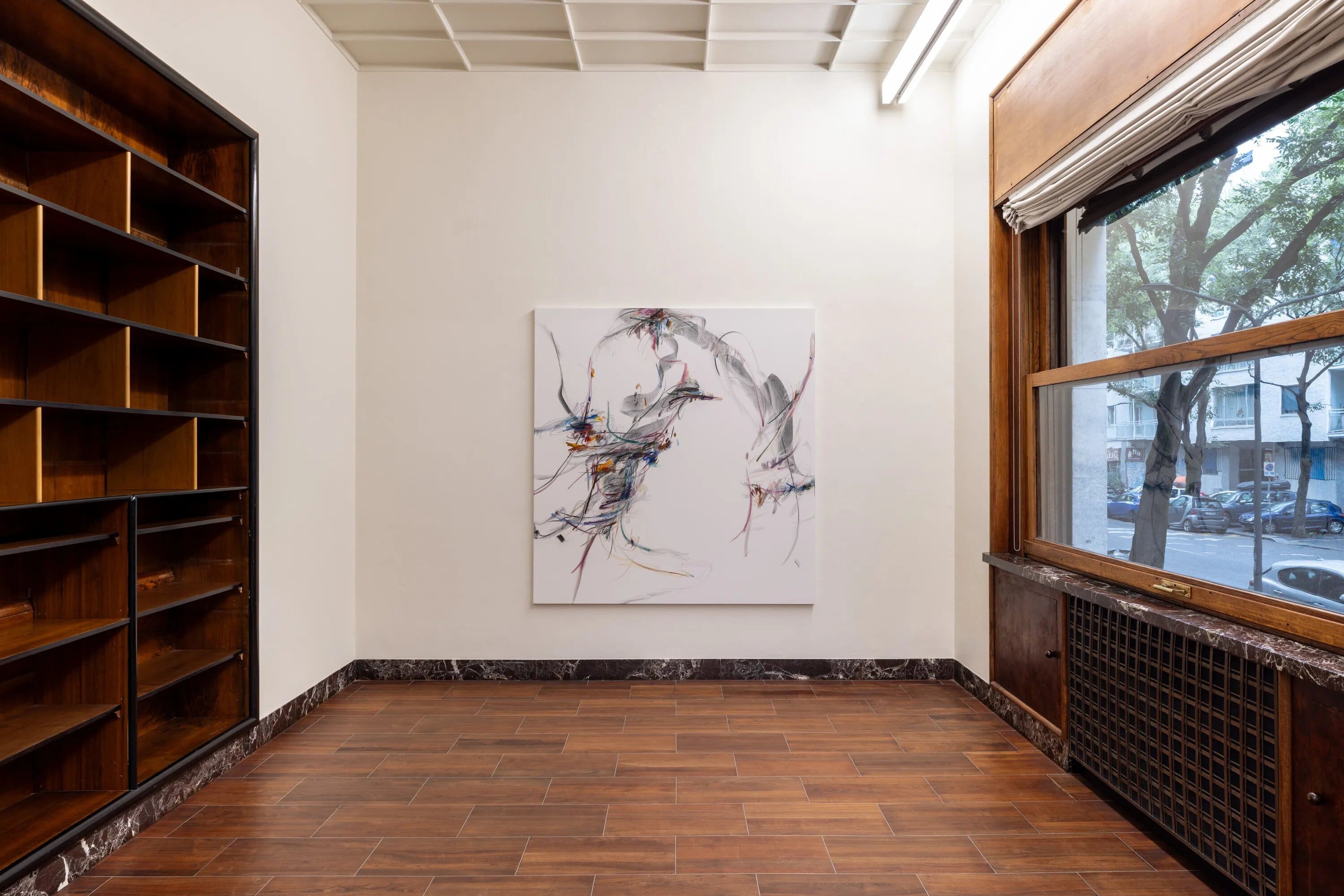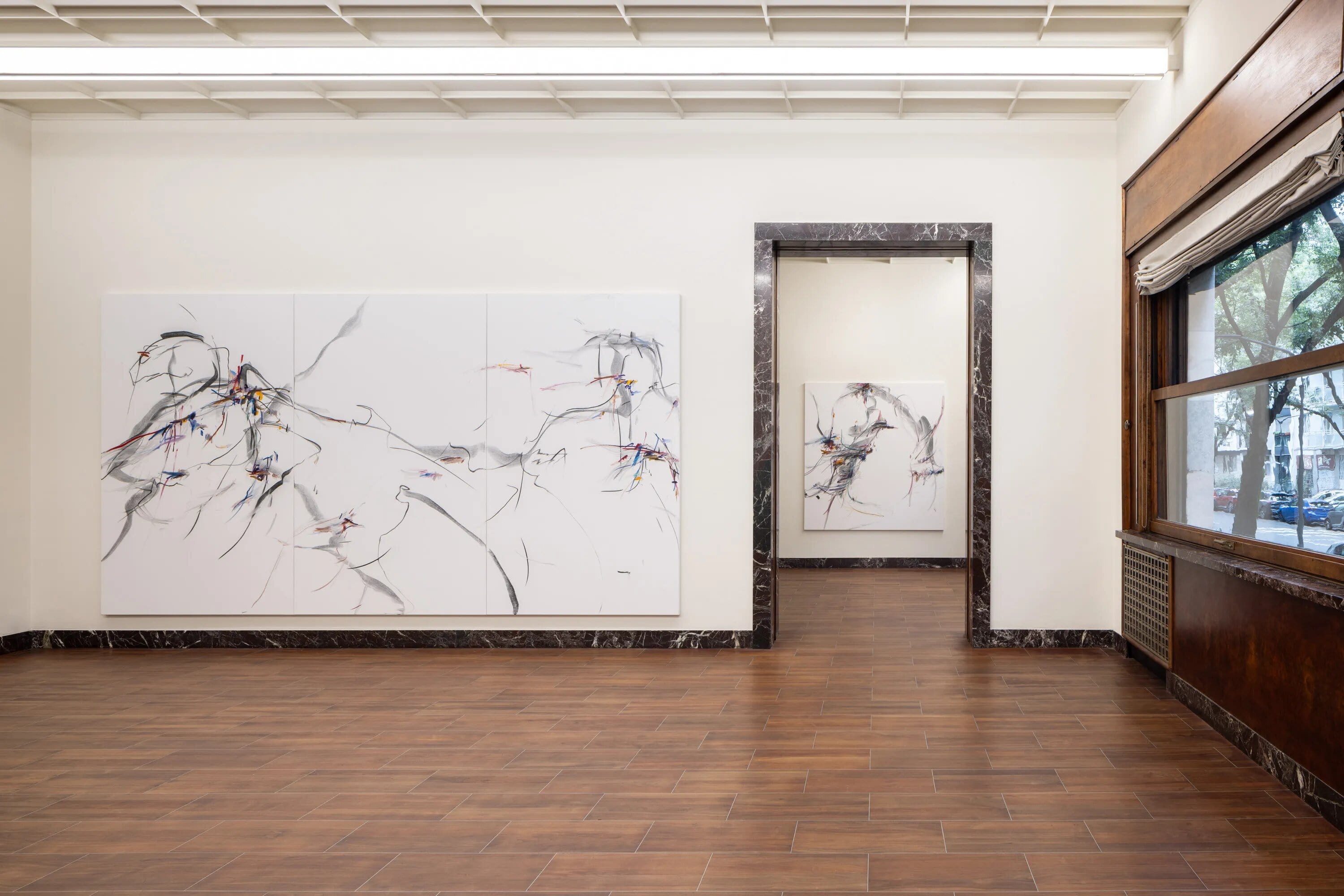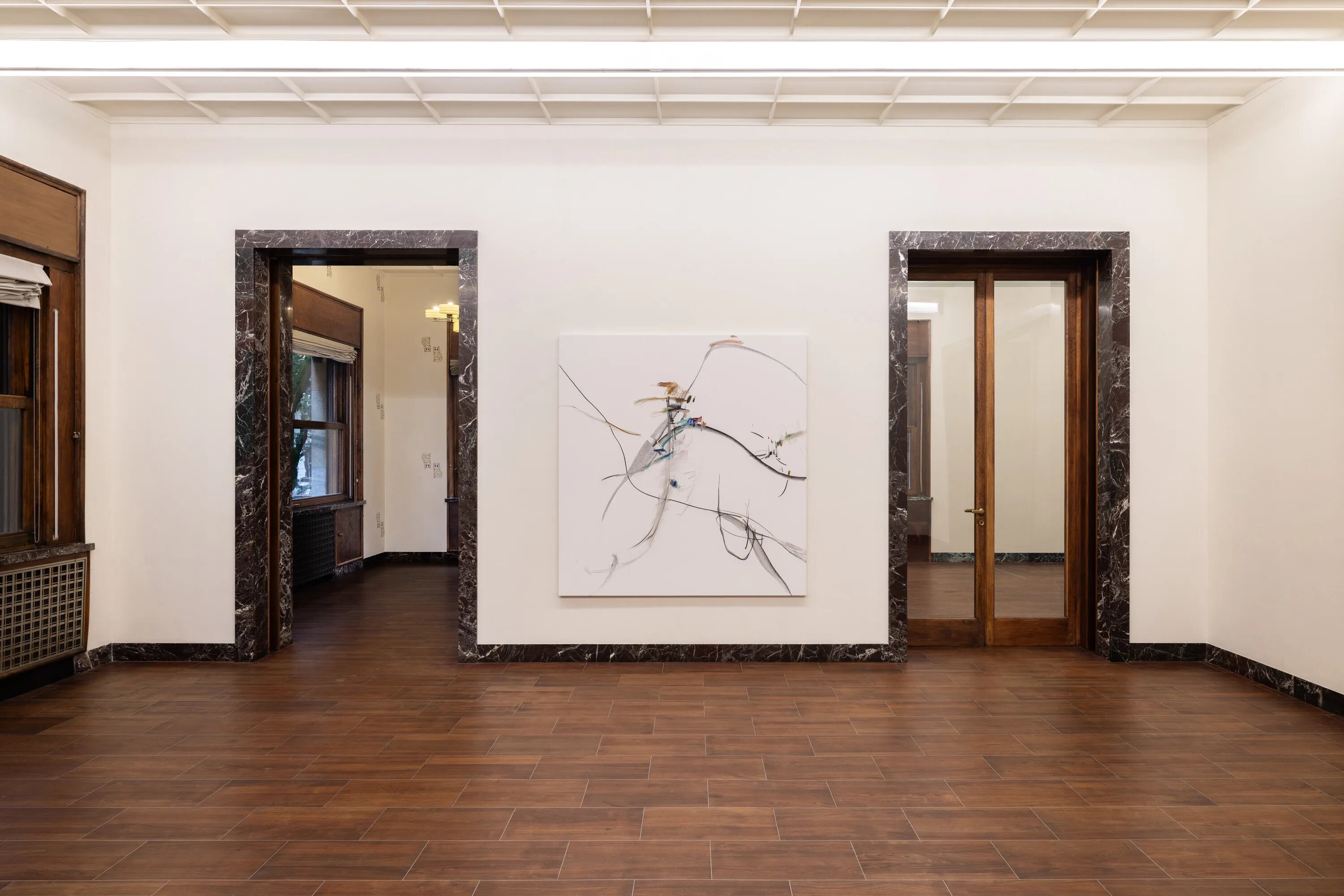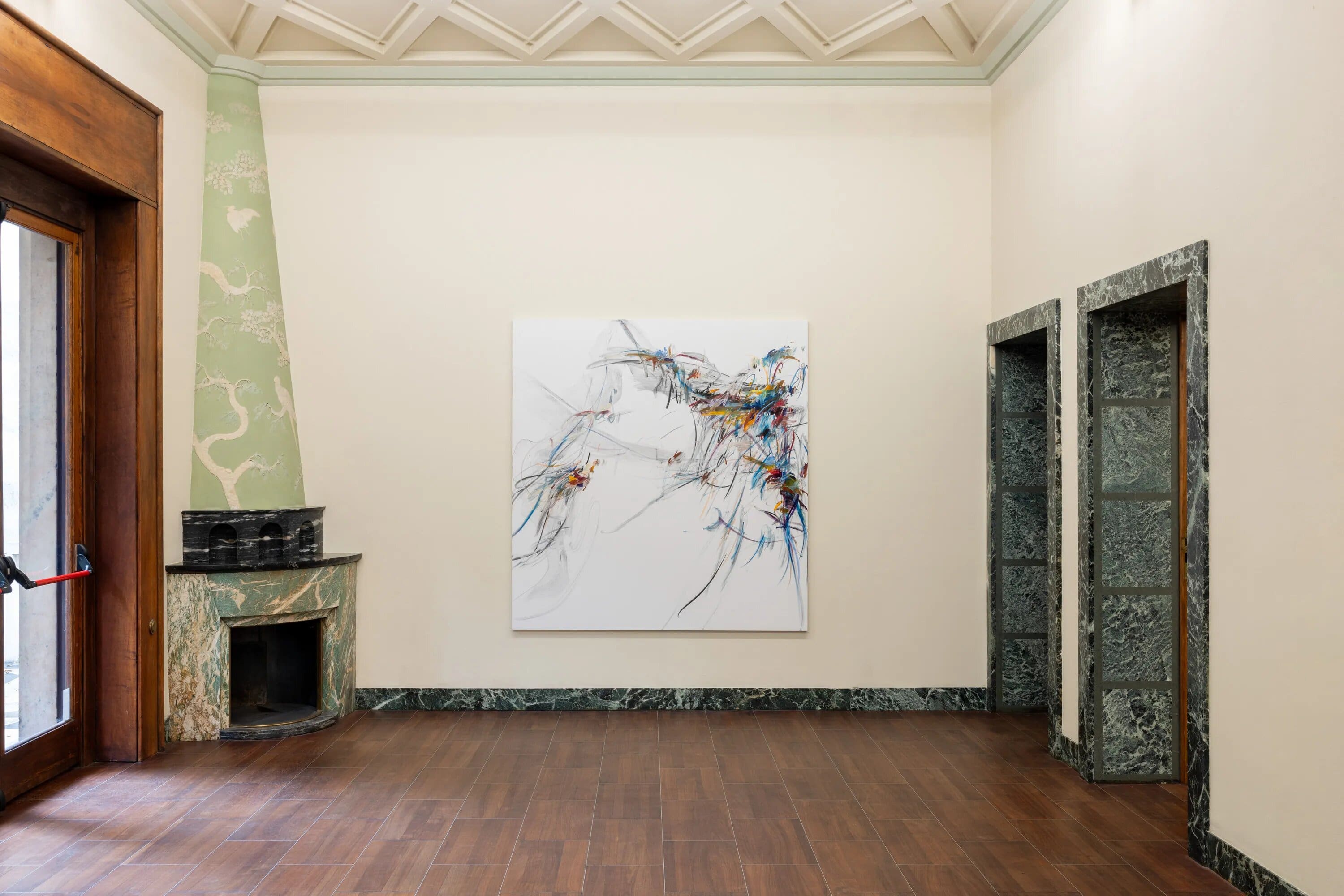Massimo De Carlo is presenting The Blue Hour in the halls of Casa Corbellini-Wasserman in Milan—a solo exhibition by Xiyao Wang, marking the Berlin-based, Chinese-born artist’s debut in Italy, featuring a selection of her works from the past year. Wang’s art represents a fusion of traditional Oriental tales and practices with her own disciplined experiences.
Drawing inspiration from Li Bai’s poem “春夜宴从弟桃花园序” (Spring Night Gathering with Friends in a Blossoming Garden), the exhibition explores themes of life’s fleeting nature and ephemeral joys. These motifs are delicately interwoven into Wang’s art, reflecting the transient beauty of spring and its delicate delights. Since moving to Germany in 2014, Wang has embraced influences from Western artists like Cy Twombly, Günther Förg, and Albert Oehlen, integrating their dynamic use of color and bold contrasts into her unique pictorial language. This synthesis forms a bridge between her Chinese heritage and Western artistic expression, enriched by her daily engagement with the teachings of Zhuangzi and a meditative tea ceremony.
A pivotal part of Wang’s daily ritual includes playing the guqin, a traditional seven-stringed Chinese instrument, which she uses as a meditative practice to deepen her connection with nature and the cosmos. This spiritual preparation flows into her creative process, culminating during the “blue hour”—that magical twilight which casts a surreal blue glow, deeply influencing her latest works. In “The Blue Hour,” visitors can experience the gradual dispersion of tones and movements across Wang’s canvases, particularly in series like “Échappé” and “Adagio,” which reflect her admiration for ballet’s fluidity and precision. The “A Little Story” series contrasts stark black charcoal with white canvas, echoing Zhuangzi’s philosophical musings on identity and existence.
For more information, please consult Massimo De Carlo’s website here.












Last Updated on October 17, 2024


